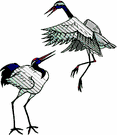Canon City Sapsuckers

Canon City has hosted both Yellow-bellied and Williamson's Sapsuckers each winter for the past several years. We are also visited by Red-naped Sapsuckers. Though they are seen primarily during migration, it is still necessary to carefully identify Sphyrpicus sapsuckers seen in this area since Yellow-bellied and Red-naped are quite similar in plumage and there could be an overlap.
I began finding fresh sap wells over a month ago in the main three locations where they have wintered in past years but did not identify one until this morning. The bottom pic shows a ponderosa pine tree with fresh sap wells drilled by a sapsucker, possibly the one in the top photo I took this morning. Drops of sap that are dripping from the sap wells are visible by some of the holes drilled in the tree.

Unforunately this adult female was shy and was not cooperative about having her picture taken so my photo is just of her back and not close-up. However, it does show some field marks for discriminating Yellow-bellied from Red-naped. Red-naped almost always have red coloration on their napes , though sometimes it can be quite small (and Howell reported some without any red on their napes), while Yellow-bellied birds have white on their napes. The white feathers on the backs of Yellow-bellies are usually in two fairly-well demarcated stripes separated by black feathers down the middle which is easily seen in my photo, while Red-naped have more mottled white on their backs. Not visible in my photo is that this sapsucker has a totally white throat without any red which is a field mark for female Yellow-bellies.
SeEtta










